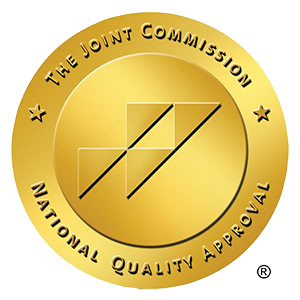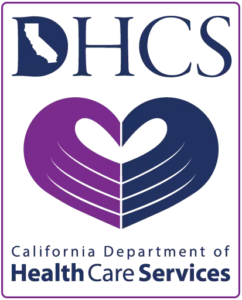If you’ve ever tried to stop using cocaine or have witnessed someone else struggle with addiction, you know how difficult the journey can be. Cocaine withdrawal symptoms bring intense cravings, emotional ups and downs, and physical discomfort. Understanding what to expect and how to manage these symptoms can make the journey to recovery a little easier.
In this article, we’ll explore the typical cocaine withdrawal timeline, common signs and symptoms, and the treatment options that can help ease the process. Whether you’re going through withdrawal yourself or helping a loved one, knowing what lies ahead and seeking professional support at Surf City Detox in Huntington Beach, California, can make a significant difference in managing the challenges.
What is Cocaine?
Cocaine is a powerful stimulant drug derived from the leaves of the coca plant, primarily found in South America. It has been used for centuries in indigenous cultures for medicinal and ceremonial purposes. However, in modern society, cocaine is typically abused as a recreational drug, often in the form of a powder or crack cocaine.
Cocaine is classified as a Schedule II controlled substance due to its high potential for abuse and addiction. It works by increasing levels of dopamine in the brain, leading to intense feelings of pleasure and reward. While this euphoric effect is why people use cocaine, it is also the mechanism behind the drug’s highly addictive properties.
How Does Cocaine Affect the Brain and Body?
When cocaine is ingested, it rapidly enters the bloodstream and crosses the blood-brain barrier, where it interferes with the normal functioning of neurotransmitters. Specifically, it blocks the reuptake of dopamine, norepinephrine, and serotonin, leading to an accumulation of these neurotransmitters in the synaptic cleft. This results in an intense feeling of euphoria and heightened alertness.

However, the effects of cocaine are short-lived, typically lasting anywhere from a few minutes to an hour. As the drug wears off, the brain experiences a drop in dopamine levels, leading to feelings of depression, irritability, and fatigue. Over time, repeated cocaine use can cause changes in the brain’s structure and function, reinforcing the cycle of addiction and highlighting the need for comprehensive addiction treatment.
The body also experiences a range of physiological effects from cocaine use, including increased heart rate, elevated blood pressure, dilated pupils, and increased body temperature. Chronic use can lead to serious health complications, including heart attack, stroke, seizures, and even death.
Why is Cocaine Addictive?
Cocaine is considered highly addictive due to its potent stimulation of the brain’s reward system, resulting in intense feelings of euphoria and pleasure. The drug increases dopamine levels in the brain, reinforcing drug-seeking behavior and making repeated use more likely. This neurological impact significantly contributes to the difficulty many individuals face when attempting to stop using.
With continued use, the brain begins to adapt by producing less dopamine naturally, while simultaneously developing a tolerance to the drug’s effects. As a result, individuals require increasingly larger or more frequent doses to achieve the same level of stimulation. This neurochemical shift can lead to persistent mood disturbances, impaired motivation, and reduced impulse control.
Cocaine withdrawal symptoms further reinforce the cycle of addiction. When someone stops using, they can experience both physical and psychological distress, such as anxiety, depression, fatigue, and cravings. These symptoms often drive people back to using just to feel normal again. Without proper support and treatment, this phase can be one of the biggest obstacles to long-term recovery.
Cocaine Withdrawal Timeline: What to Expect

Cocaine withdrawal symptoms differ from person to person, influenced by factors such as addiction severity, method of use, and any co-occurring mental health conditions. It is typically broken down into three phases, which include the following:
1. Acute Phase (1-3 Days)
The acute phase of cocaine withdrawal begins within hours of the last use of the drug. During this phase, the body begins to adjust to the absence of cocaine, and the individual may experience intense cravings for the drug. The physical and psychological symptoms of withdrawal tend to peak during the first 24 to 72 hours. Common symptoms during the acute phase include:
- Fatigue and exhaustion
- Increased appetite
- Irritability and anxiety
- Depression or feelings of hopelessness
- Difficulty concentrating
- Sleep disturbances, including insomnia or hypersomnia (excessive sleep)
- Muscle aches and pains
- Slowed thinking and motor function
The acute phase can be particularly challenging, as the individual may feel overwhelmed by cravings and psychological distress. The physical symptoms, while uncomfortable, typically start to subside after the first few days.
2. Subacute Phase (4-10 Days)
The subacute phase typically occurs after the acute phase has passed and can last anywhere from several days to a week. During this time, the worst of the physical symptoms may have subsided, but psychological symptoms can still be significant. Cravings may persist, and the individual may continue to experience feelings of depression and anxiety. Symptoms during the subacute phase may include:
- Mood swings
- Difficulty finding pleasure in everyday activities (anhedonia)
- Anxiety and restlessness
- Persistent cravings for cocaine
- Fatigue and low energy levels
While the physical symptoms may be less severe, the emotional and psychological symptoms of withdrawal can still be intense. The risk of relapse is high during this phase, as individuals may seek out cocaine in an attempt to alleviate these distressing symptoms.
3. Protracted Phase (Weeks to Months)
The protracted phase of cocaine withdrawal can last for weeks or even months after the last use of the drug. During this phase, the individual may continue to experience lingering symptoms, particularly those related to mood and cognition. While the cravings for cocaine may decrease over time, they can still be triggered by certain situations or environmental cues. Symptoms during the protracted phase may include:
- Continued mood swings or depression
- Difficulty concentrating or making decisions
- Cravings for cocaine triggered by stress or environmental cues
- Sleep disturbances
- Anxiety and irritability
For many individuals, the protracted phase represents a long-term struggle to regain mental clarity and emotional stability. Continued treatment and support may be necessary to fully recover from the effects of addiction.
Side Effects of Gabapentin
In some cases, medications may be used to help manage the symptoms of cocaine withdrawal. One such medication is gabapentin, an anticonvulsant that has been shown to alleviate some of the physical and psychological symptoms of withdrawal, including anxiety, restlessness, and sleep disturbances. However, like all medications, gabapentin has its own set of side effects. Common side effects of gabapentin include:
- Dizziness or lightheadedness
- Fatigue or drowsiness
- Swelling of the hands or feet
- Difficulty concentrating or memory problems
- Nausea or vomiting
Always work with a healthcare professional to manage side effects and adjust treatment as needed.
Signs and Symptoms of Cocaine Withdrawal
Cocaine withdrawal symptoms can be physically and emotionally taxing. The most common signs and symptoms of cocaine withdrawal include:
- Fatigue or extreme tiredness
- Increased appetite and cravings for food, especially sugary or salty foods
- Muscle pain or stiffness
- Sleep disturbances, including insomnia or excessive sleep
- Tremors or shaking
- Chills or sweating
- Depression and feelings of sadness
- Anxiety and nervousness
- Irritability and mood swings
- Difficulty concentrating or focusing
- Intense cravings for cocaine
Treatment Options for Cocaine Withdrawal
The treatment of cocaine withdrawal often involves a combination of medical and psychological interventions. Medical detoxification is typically the first step in the recovery process, as it allows individuals to safely withdraw from cocaine under the supervision of healthcare professionals. Some treatment options for cocaine withdrawal include:

While there is no specific medication approved for the treatment of cocaine addiction, medications such as gabapentin or antidepressants may be prescribed to manage withdrawal symptoms and alleviate cravings.
Cognitive behavioral therapy is a form of psychotherapy that helps individuals identify and change negative thought patterns and behaviors associated with addiction. It has been shown to be effective in treating cocaine addiction and reducing the risk of relapse.
Family therapy plays a vital role in the recovery process by involving loved ones in treatment. It helps improve communication, rebuild trust, and address any family dynamics that may contribute to substance use. Engaging in therapy as a family can create a supportive environment that encourages long-term recovery and strengthens relationships.
For individuals with severe addictions, inpatient rehabilitation programs provide a structured environment for recovery, offering 24/7 support and medical care. Outpatient programs may be more suitable for individuals with less severe addictions or those transitioning out of inpatient care.
Manage Withdrawal Symptoms at Surf City Detox
At Surf City Detox, we offer comprehensive medical detox programs designed to help individuals safely and comfortably withdraw from cocaine and other substances. Our team of experienced professionals provides personalized care and support throughout the detox process, ensuring that individuals receive the best possible treatment for their needs.
If you or a loved one is struggling with cocaine addiction, Surf City Detox is here to help. We are committed to providing the highest level of care and support to help individuals achieve lasting recovery. Contact us today!
Dr. Eric Chaghouri is a 2007 graduate from the University of California, Los Angeles, where he earned his B. A. in Biology with Summa Cum Laude honors. While at UCLA, he helped the men’s varsity volleyball team earn a National Championship in 2006. He was named the UCLA Scholar-Athlete of the Year in 2007.
He earned his medical degree from the Keck School of Medicine in 2011. He completed his internship training in 2008 at Cedars-Sinai Medical Center and the remaining three years of residency in general adult psychiatry at the Los Angeles County and University of Southern California Medical Center. He served as the Chief Resident in psychiatric emergency services during his fourth year of residency. He also served as Resident Clinical Instructor and Volunteer Faculty in the Department of Psychiatry at the Keck School of Medicine.
After completing residency, Dr. Chaghouri accepted a fellowship position in forensic psychiatry at the prestigious USC Institute of Psychiatry and Law. His scholarly activities included publishing in Legal Digest and presenting research findings at the Keck School of Medicine annual conference.
Since completing his forensic psychiatry fellowship, he has established a successful and thriving practice in Southern California, focusing on treatment of co-occurring psychiatric and addictive disorders. He has developed a strong clinical team of practitioners who share similar goals and philosophies regarding psychiatric treatment, including providing cutting-edge interventional treatments for psychiatric conditions. He works in an array of capacities with attorneys, courts, and other parties in actual or potential litigation. He also has extensive experience consulting and providing opinions on psychiatric issues for major television networks. Dr. Chaghouri’s interests include addiction medicine, substance use disorders, forensic psychiatry, medical ethics, psychological autopsy, gender wellness, and evidence-based treatment of psychiatric conditions.



